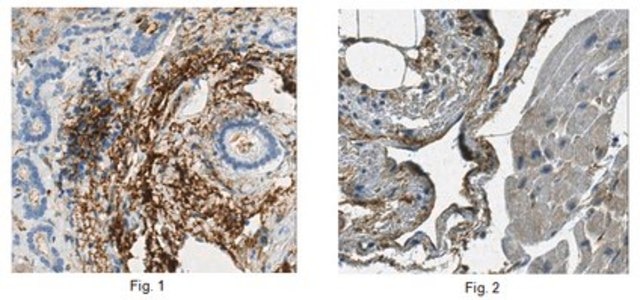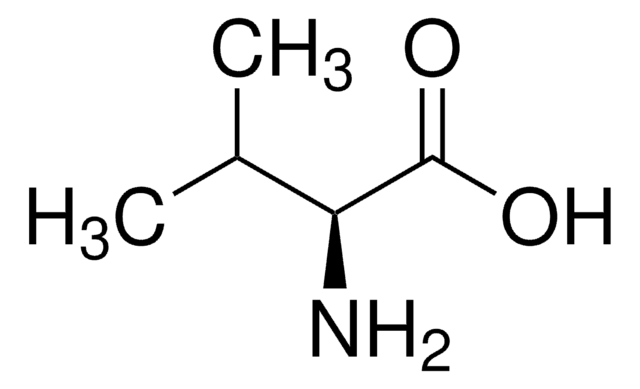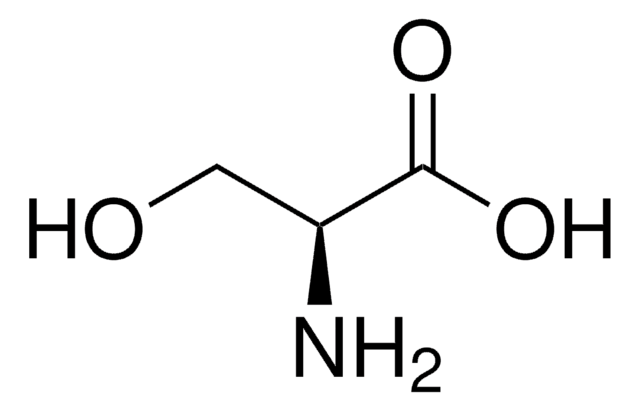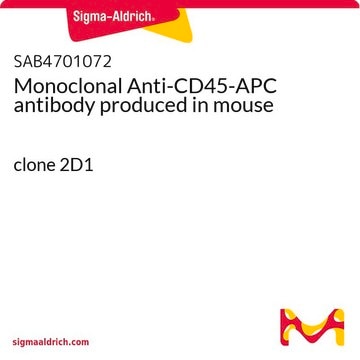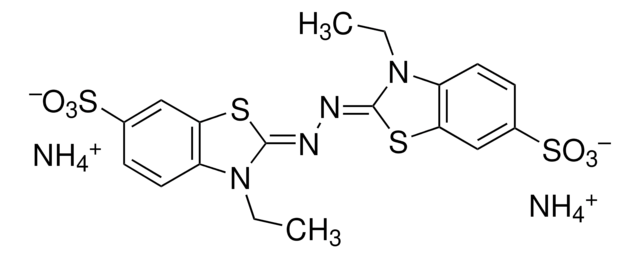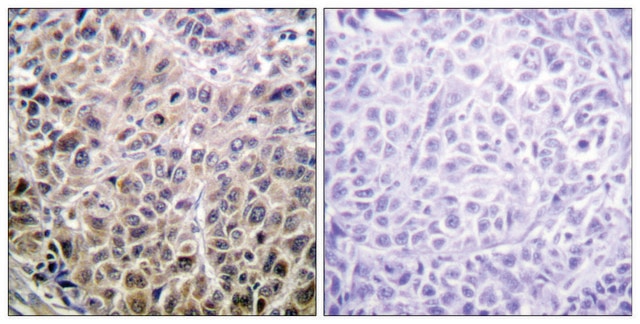05-718
Anti-PML Antibody, clone 36.1-104
clone 36.1-104, Upstate®, from mouse
Synonym(s):
Anti-MYL, Anti-PP8675, Anti-RNF71, Anti-TRIM19
Sign Into View Organizational & Contract Pricing
All Photos(1)
About This Item
UNSPSC Code:
12352203
eCl@ss:
32160702
NACRES:
NA.41
Recommended Products
biological source
mouse
Quality Level
antibody form
purified immunoglobulin
antibody product type
primary antibodies
clone
36.1-104, monoclonal
species reactivity
mouse
manufacturer/tradename
Upstate®
technique(s)
immunocytochemistry: suitable
western blot: suitable
isotype
IgG
NCBI accession no.
UniProt accession no.
shipped in
dry ice
target post-translational modification
unmodified
Gene Information
human ... PML(5371)
General description
Promyeloctic Leukemia Gene product (PML) is a nuclear protein with growth-suppressive properties originally identified in the context of the PML-retinoic receptor alpha (RAR alpha) fusion protein of acute promyelocytic leukemia. PML localizes within distinct nuclear structures, called nuclear bodies, which are disrupted by the expression of PML-RAR alpha.
Specificity
Recognizes PML.
Immunogen
6His fusion protein corresponding to mouse PML (promyelocytic leukemia protein)
Application
Detect PML also known as Promyelocytic Leukemia Protein with Anti-PML Antibody, clone 36.1-104 (Mouse Monoclonal Antibody), that has been demonstrated to work in ICC & WB.
Research Category
Epigenetics & Nuclear Function
Epigenetics & Nuclear Function
Research Sub Category
Transcription Factors
Transcription Factors
Quality
routinely evaluated by immunoblot on RIPA lysates from mouse embryo fibroblast (MEF1) cells
Target description
90-106 kDa
Physical form
Format: Purified
Protein G Purified
Protein G Purified immunoglobulin in 0.1M Tris-glycine, pH 7.4, 0.15M NaCl with 0.05% sodium azide as a preservative.
Storage and Stability
Maintain for 2 years at -20°C from date of shipment. Aliquot to avoid repeated freezing and thawing. For maximum recovery of product, centrifuge the original vial after thawing and prior to removing the cap.
Analysis Note
Control
MEF1 cell lysate
MEF1 cell lysate
Other Notes
Concentration: Please refer to the Certificate of Analysis for the lot-specific concentration.
Legal Information
UPSTATE is a registered trademark of Merck KGaA, Darmstadt, Germany
Disclaimer
Unless otherwise stated in our catalog or other company documentation accompanying the product(s), our products are intended for research use only and are not to be used for any other purpose, which includes but is not limited to, unauthorized commercial uses, in vitro diagnostic uses, ex vivo or in vivo therapeutic uses or any type of consumption or application to humans or animals.
Not finding the right product?
Try our Product Selector Tool.
recommended
Product No.
Description
Pricing
wgk_germany
WGK 1
Certificates of Analysis (COA)
Search for Certificates of Analysis (COA) by entering the products Lot/Batch Number. Lot and Batch Numbers can be found on a product’s label following the words ‘Lot’ or ‘Batch’.
Already Own This Product?
Find documentation for the products that you have recently purchased in the Document Library.
SUMOylation of Tr2 orphan receptor involves Pml and fine-tunes Oct4 expression in stem cells.
Sung Wook Park, Xinli Hu, Pawan Gupta, Ya-Ping Lin, Sung Gil Ha, Li-Na Wei
Nature Structural and Molecular Biology null
Abrar Ahmed et al.
Scientific reports, 7, 44539-44539 (2017-03-21)
Promyelocytic Leukemia (PML) is a nuclear protein that forms sub-nuclear structures termed nuclear bodies associated with transcriptionally active genomic regions. PML is a tumour suppressor and regulator of cell differentiation. We demonstrate that PML promotes TNFα-induced transcriptional responses by promoting
Jacques Dutrieux et al.
PLoS pathogens, 11(11), e1005280-e1005280 (2015-11-14)
PML (Promyelocytic Leukemia protein), also known as TRIM19, belongs to the family of tripartite motif (TRIM) proteins. PML is mainly expressed in the nucleus, where it forms dynamic structures known as PML nuclear bodies that recruit many other proteins, such
Peter Brand et al.
PMC biophysics, 3(1), 3-3 (2010-03-09)
The mammalian cell nucleus contains a variety of organelles or nuclear bodies which contribute to key nuclear functions. Promyelocytic leukemia nuclear bodies (PML NBs) are involved in the regulation of apoptosis, antiviral responses, the DNA damage response and chromatin structure
SUMO-1-dependent allosteric regulation of thymine DNA glycosylase alters subnuclear localization and CBP/p300 recruitment.
Mohan, RD; Rao, A; Gagliardi, J; Tini, M
Molecular and cellular biology null
Our team of scientists has experience in all areas of research including Life Science, Material Science, Chemical Synthesis, Chromatography, Analytical and many others.
Contact Technical Service
